So Shaun Vought and I, are planning a trip to Arizona in a few weeks and I found myself flipping through some old photographs from my trip last year. Anyone who is passionate about seeing snakes in the wild, knows that Arizona is one of the best places to do it here in the states. The Sonoran Desert has a very broad range of the reptiles, amphibians and bugs that herpetology fanatics typically target, and if the time, location and conditions are just right, the experience is nothing short of intoxicating.
Arizona is home to 13 different species of rattlesnake alone! Many people don’t realize that one rattlesnake is any different from another, but there are several unique characteristics (some subtle and some obvious) that separate them. I hope one day to be able to find all 13 and post pictures, but I’m happy to share what I do have so far.
Introduction to Arizona Rattlesnakes
Western Diamondback
Let’s start with one of the premier icons of the West. If you’ve ever seen a rattlesnake in a movie, it is very likely that the critter you saw slither across the screen, was a Western Diamondback Rattlesnake (Crotalus atrox). These are the largest of the Arizona rattlers coming in at a little over 6 feet in some rare cases. They have fairly toxic venom and copious amounts of it. Hollywood would have you believe that these snakes are aggressive, blood-thirsty man-killers, but in reality, they are typically quite subdued and would rather crawl away than confront a human.
The round holes you see on the front of this young specimens face, are not nostrils, but heat recepting pits used to detect tiny variations in temperature to identify prey. These pits are unique to all pit vipers.
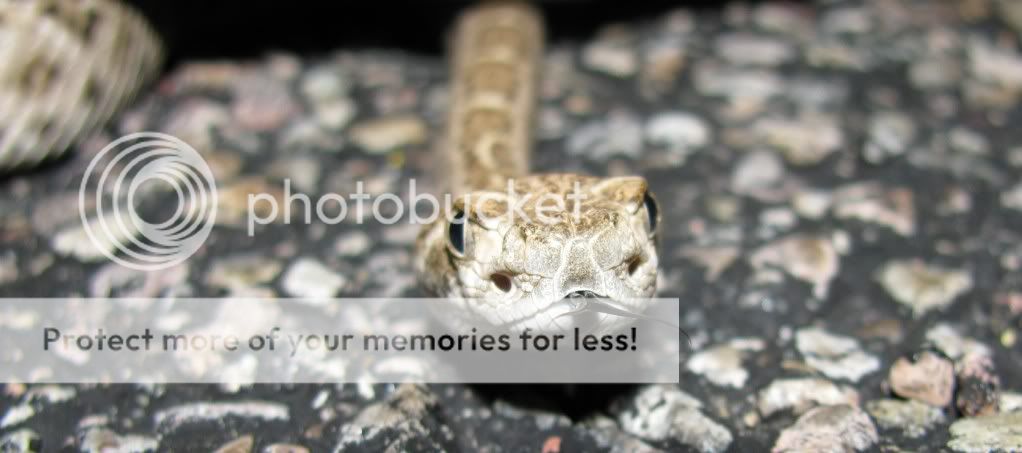
These snakes have big heads and the legendary diamond pattern on their back. As with all Arizona rattlesnakes, the tail ends with a noticable rattle. Western Diamondbacks are in part, identified by their evenly spaced black and white “coontail” just above the rattle.
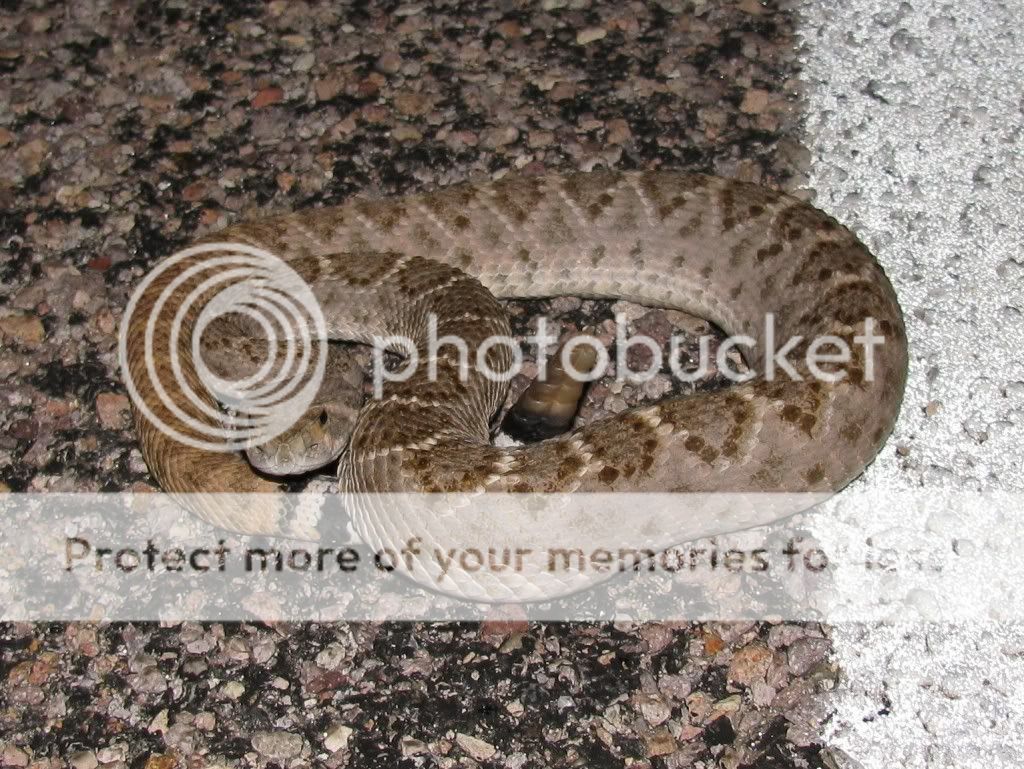
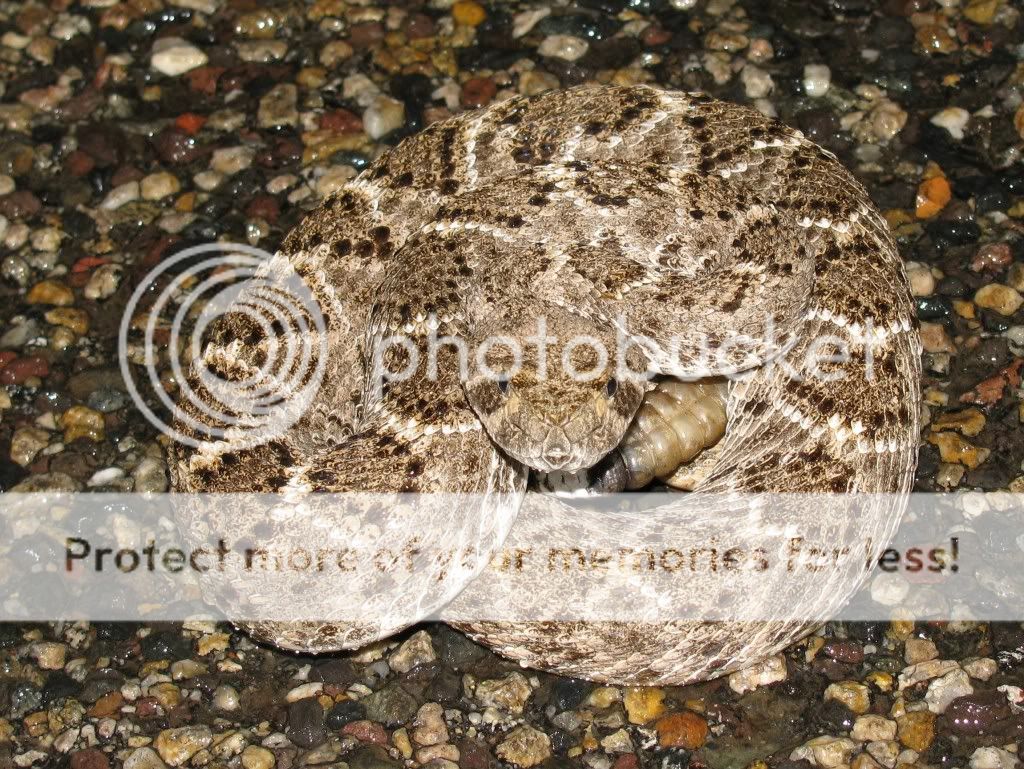
Mojave Rattlesnake
Though typically smaller than the Western Diamondback, the similar-looking Mojave (sometimes spelled Mohave) Rattlesnake (Crotalus scutulatus) is renowned for its uniquely toxic venom. Most North American pit vipers have venom consisting of toxins that effect the blood (hemotoxins), but the Mojave’s venom has predominately neurotoxic components, which effect the nervous system similar to Coral snakes, Cobras and Kraits. Drop for drop, the Mojave is considered to be the most venomous pit viper in the U.S. and (in my experience) it generally has an attitude to match.
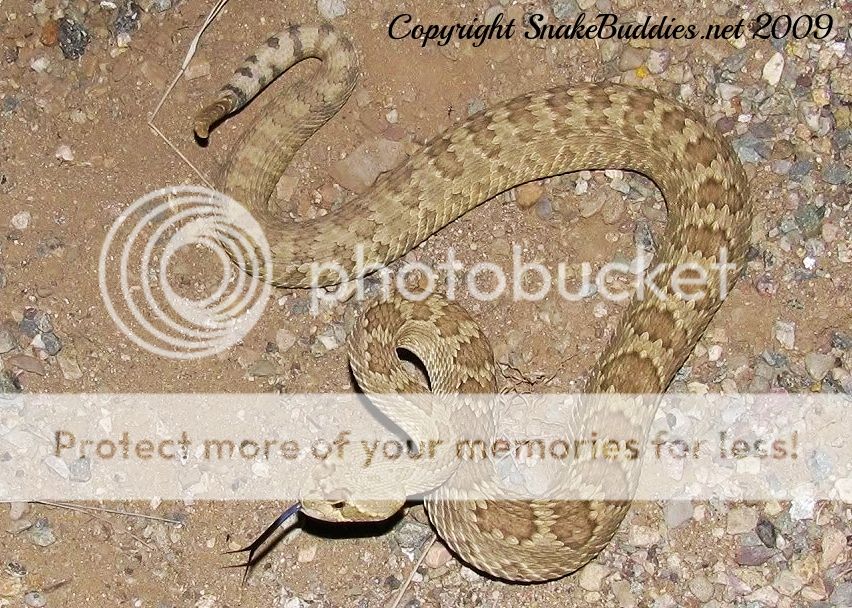
You can kind of see why these snakes are sometimes referred to as the Mojave Green, since it is commonly tinged with greenish hues. Though these snakes generally have a coon tail as well, you notice that the black bands are typically thinner and sometimes incomplete.
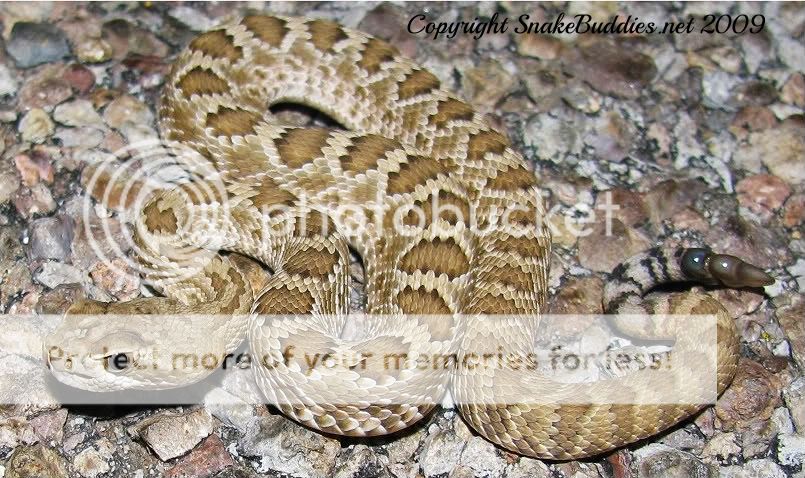
Notice this young snakes tail. Baby rattlers are born with a single button at the end of their tail. This one has only shed once and now has two buttons. Contrary to popular myths, babies do have rattles, so one should never kill snake under the impression that it simply hasn’t grown it’s rattle yet.
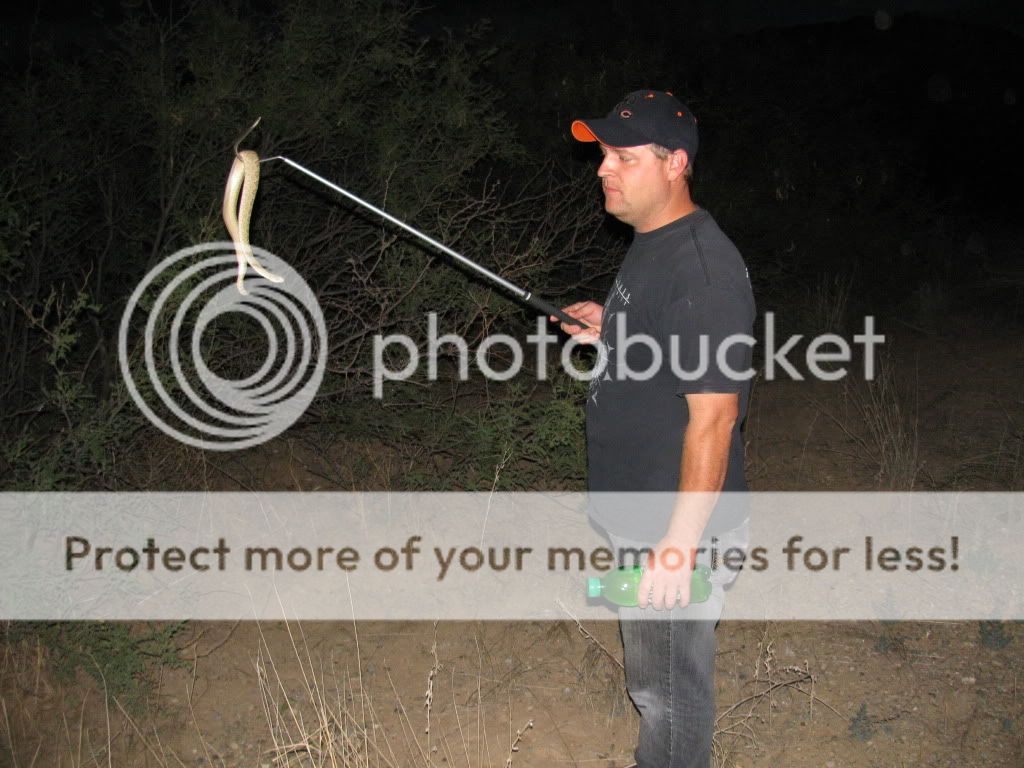
You’ve likely noticed by now that we find many of these snakes on the road. As avid conservationists, we go out of our way to move them out of harms way, when given the opportunity. Here, the legendary Shaun Vought, is moving a Mojave Rattlesnake off of a road and into safer habitat.
Blacktail Rattlesnake
One of my all-time favorites of all the rattlers is the Blacktail (Crotalus molossus). They have a strikingly beautiful pattern with high contrast and are amongst the more gentile of the buzztails and are generally slow to anger. As the name suggests, this rattler can be identified by the black section of scales above the rattle.
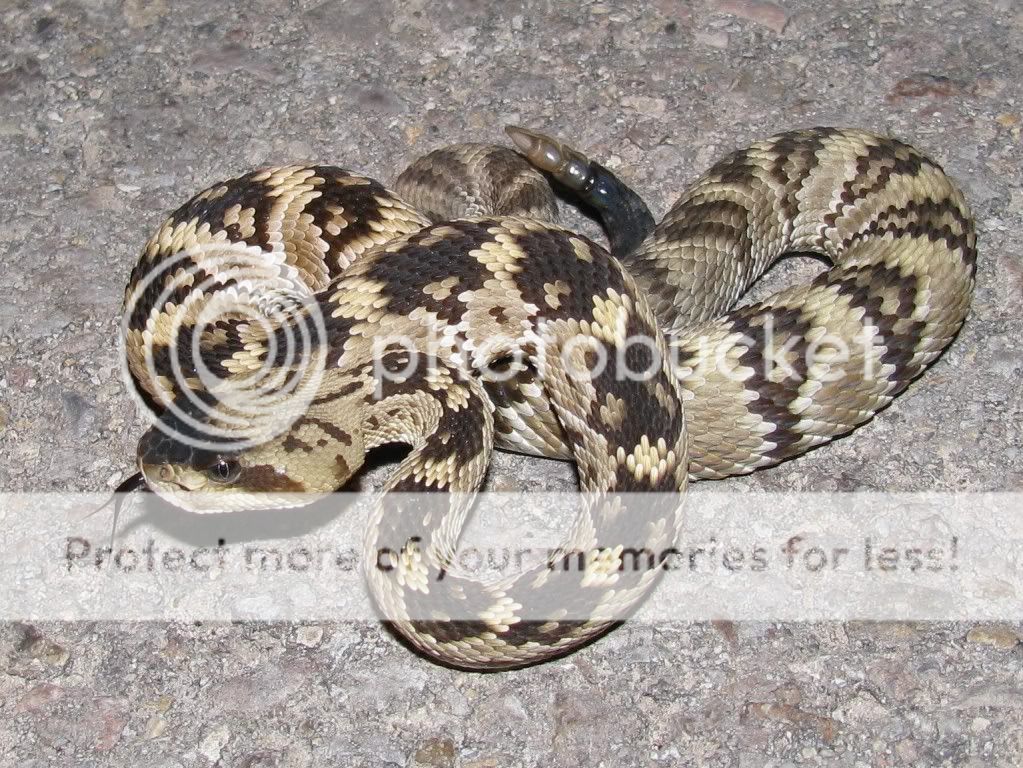
Can you see why I love these guys? Simply stunning!
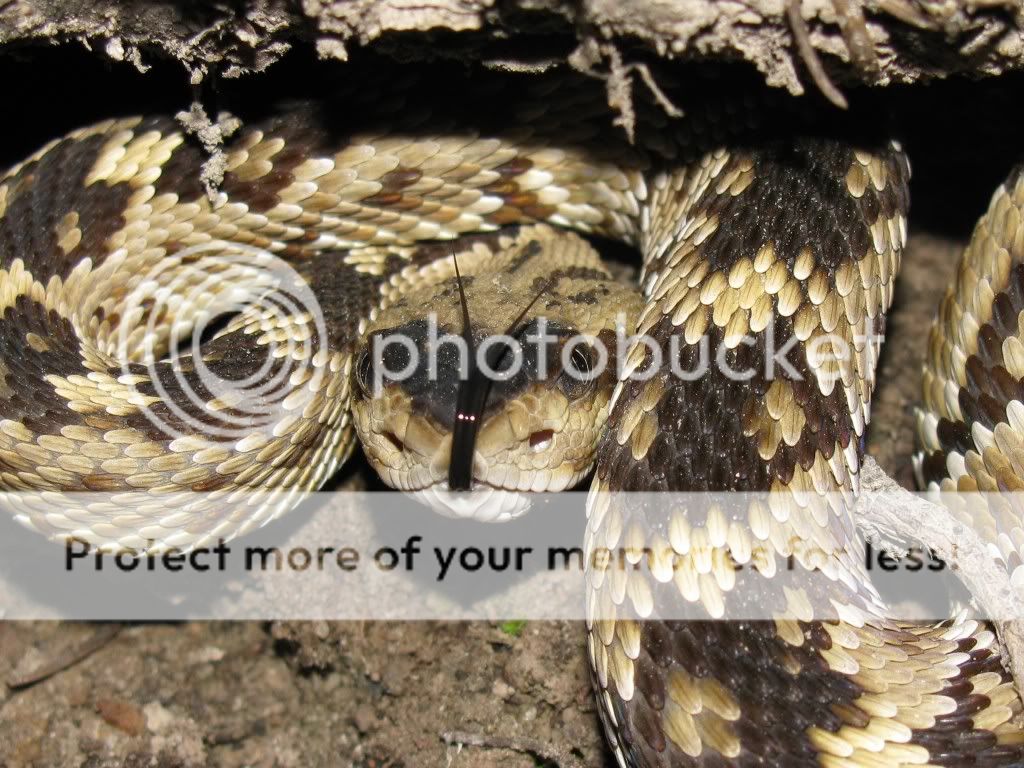
Banded Rock Rattlesnake
Believe it or not, some people actually keep rattlesnakes as pets! As a die-hard venomous snake fan, I can understand and appreciate the allure to keeping one, but feel obligated to admit that in most cases, this is a very bad idea. Only the most experienced, educated and extraordinarily cautious people should ever consider this practice; and only then, if they live in a state, county and city that allows it. Unfortunately, that is not the case, which is one reason why the Banded Rock Rattlers, (Crotalus lepidus klauberi) amongst other montane rattlesnake species (Arizona Ridgenose and Twinspot), are now protected in Arizona. These rather small and attractive serpents are often illegally collected for personal use or sold on the black market, domestically and overseas.

Most snakes are rather secretive. I would never have found this one in its shallow hiding spot, if it hadn’t offered its tell-tale warning once I walked past it.
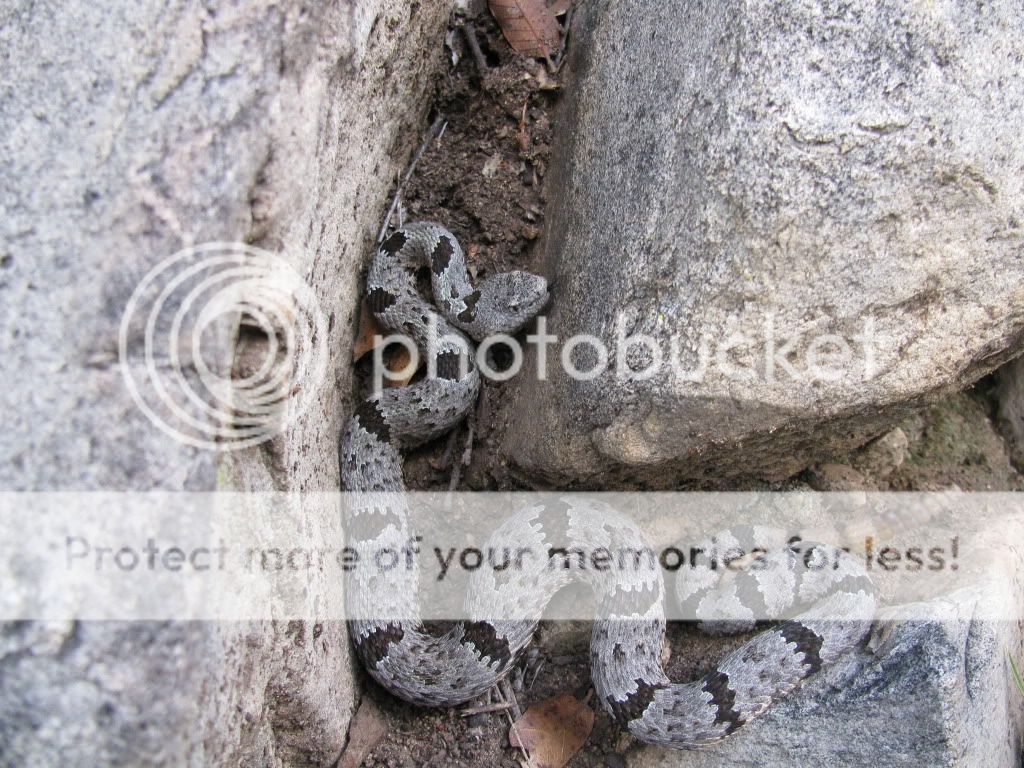
Desert Massasauga Rattlesnake
Speaking of protected species, here is another rattler that is on the “Do not touch” list in Arizona. Many locals spend countless hours and miles looking for these rare animals without finding them. Shaun and I were lucky to find this one on the road one morning. Desert “Massies” (Sistrurus catenatus edwardsii) are part of the pygmy genus and are quite small with a less than obvious rattle. Though diminutive in size, they make up for it in attitude. This one did not seem to want our help getting him off the busy road, but we persevered and he went reluctantly on his merry way.
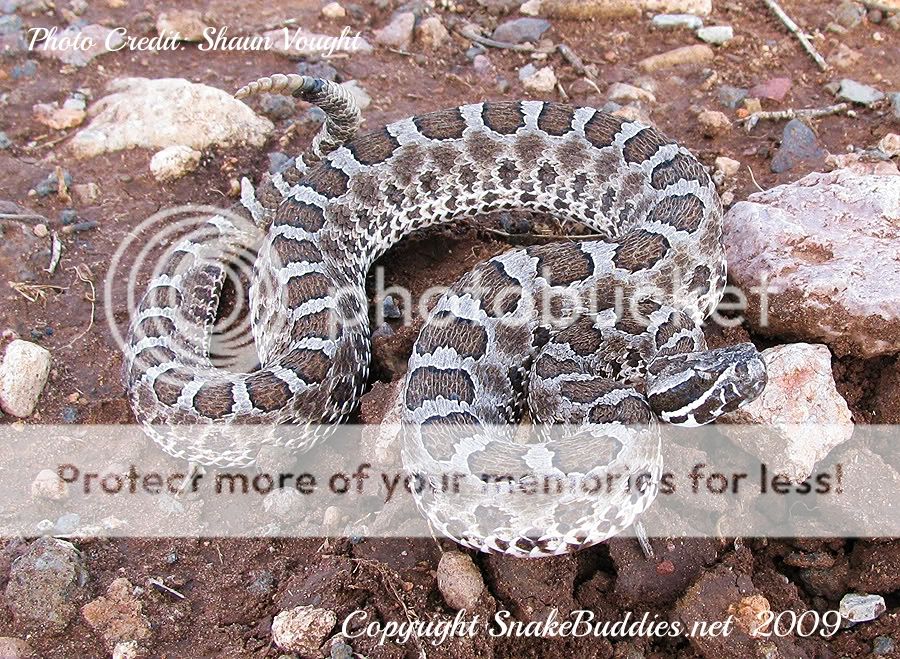
Sidewinder Rattlesnake
Sidewinders (Crotalus cerastes), though common, are always fun to find. Their unique locomotion is as elegant as any animal I’ve ever witnessed. On sand, they glide effortlessly, and on pavement they almost look like they are floating. With prominant scales over each eye, their “horns” give them a personality (if sinister) rare in most other rattlers. Their venom, by comparison, is relatively weak, but is still nothing to mess with. A bite from any rattlesnake is bound to make you have a very bad, very expensive week, with residual pain that could last months.
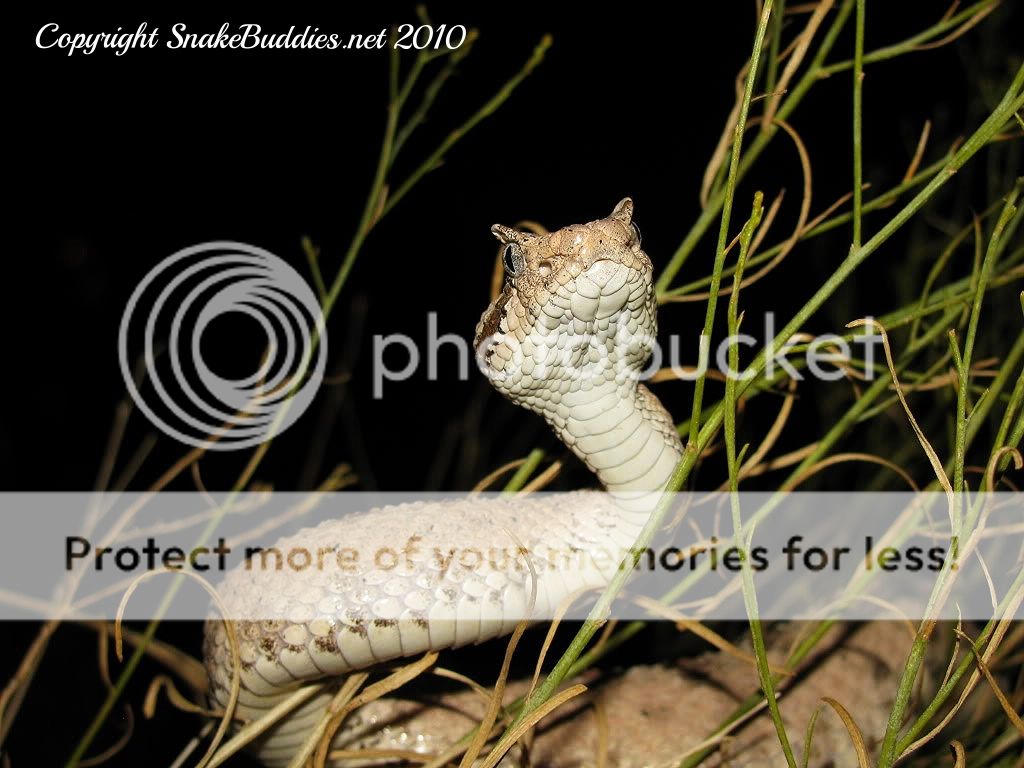
Rattlers, by definition, have very poor muscle control and are rather sluggish in most instances other than striking. However, Sidewinders buck the trend and are surprisingly agile compared to their close relatives. I noticed, as you see, that they will often climb into small bushes to hide from predators if threatened.
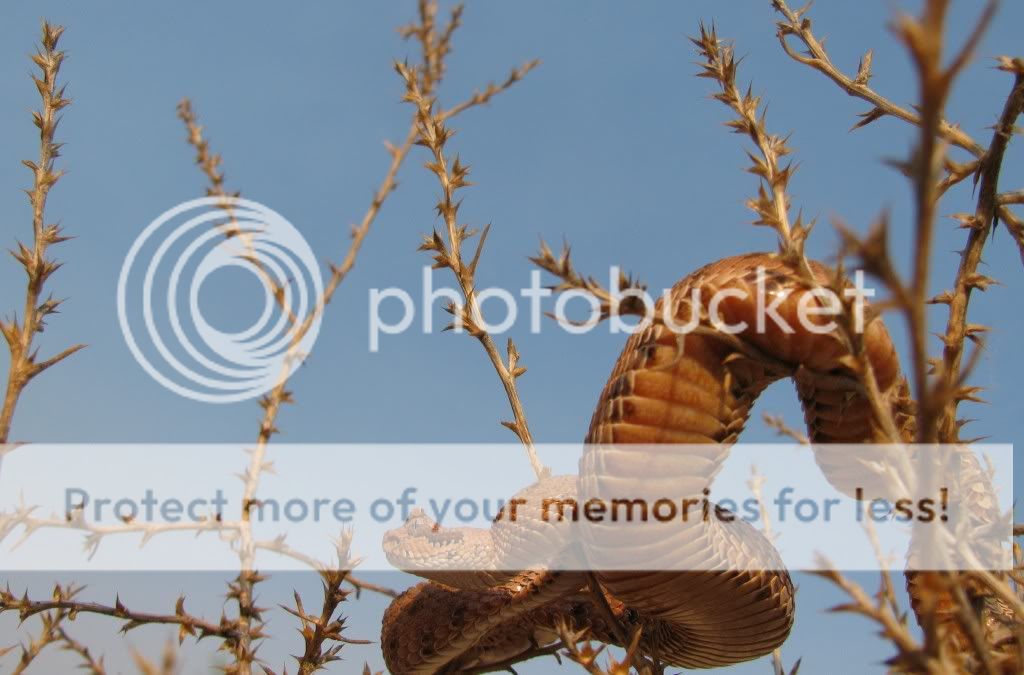
Great Basin Rattlesnake
The Great Basin Rattlesnake (Crotalus oreganus lutosus) is what I affectionately call the box of chocolates rattlesnake. This is a rattlesnake wildly under-appreciated for its variability. With many species of snakes, if you’ve seen one, you’ve seen them all (more or less), but not so with this little gem. Even within a single den site, individuals may look drastically different. I have seen orange, yellow, silver, tan, brown, black, etc. etc. They have a small range in Arizona, and I have yet to actually find one there, but I have come across several in both Utah and Nevada.


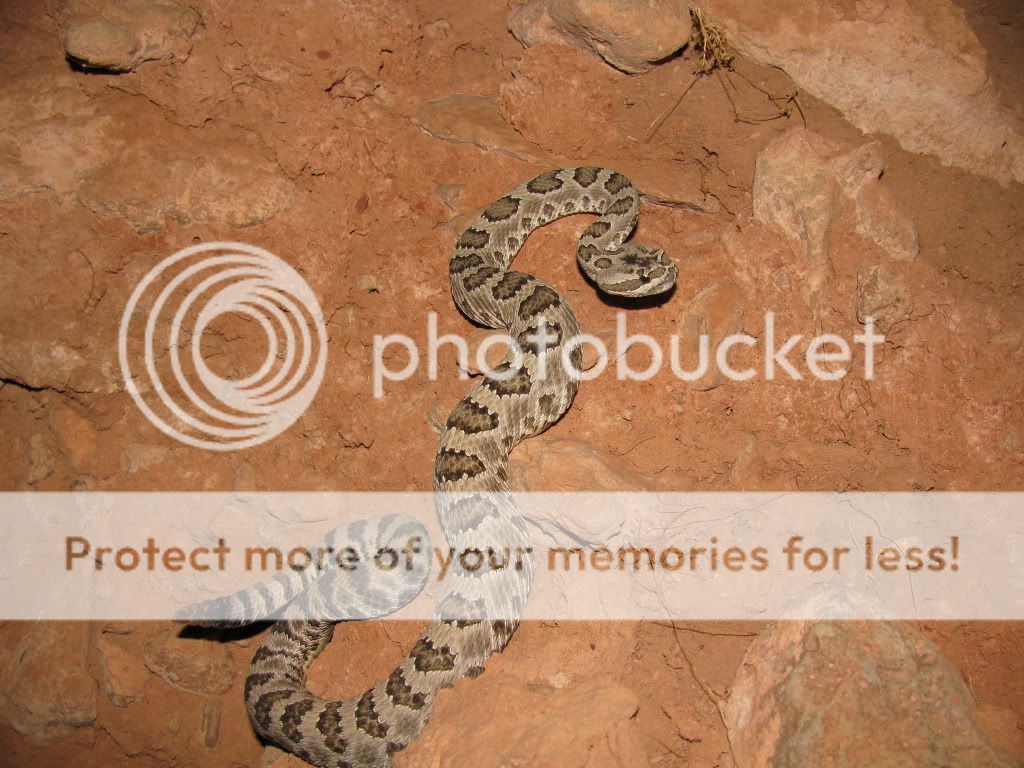
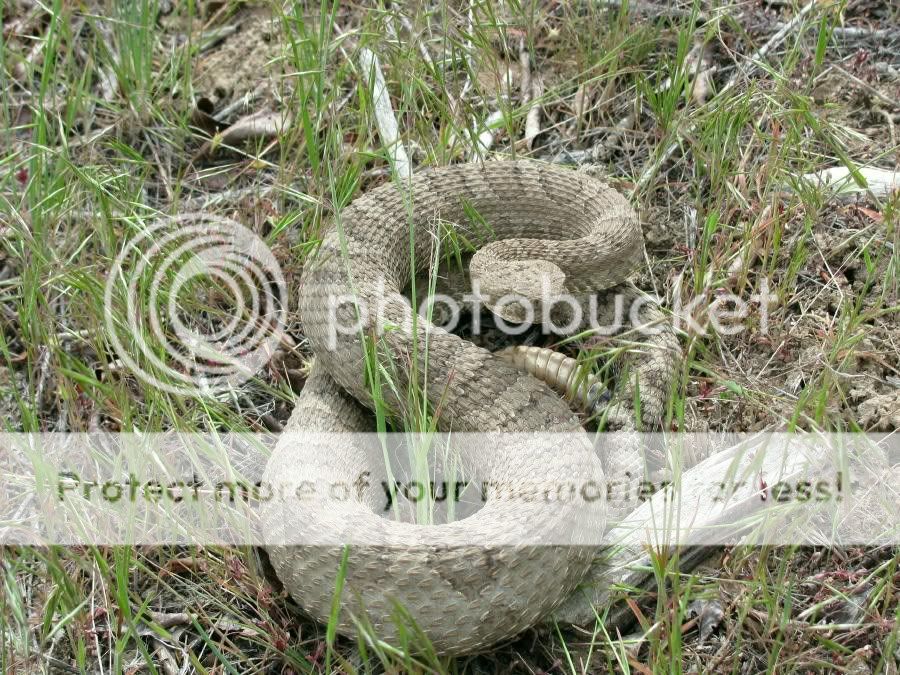

This is a photo of me (Jamison Hensley) working with a Great Basin Rattlesnake in Great Basin National Park in Nevada. Bryan Hamilton is the biologist for the park and invites me and other herpetology enthusiasts to help him with an annual survey.
It is not often that you get to witness an animal like this feeding in the wild, which made this find quite interesting to me. The prey item is a Kangaroo Rat which the snake swallowed down at a record pace. Snake are extremely vulnerable with a mouth full of food, as they have no way to protect themselves.
I hope to have more to add to this post (or perhaps I’ll create another) in a month or so, after my next Arizona trip. Rattlesnakes on my target list, will be Speckled Rattlesnakes (Crotalus mithcelli), Arizona Black Rattlesnakes (Crotalus cerberus), Tiger rattlesnakes (Crotalus tigris) and Ridgenose Rattlesnakes (Crotalus willardi). I’ve been waiting years to observe some of these critters in the wild, and am extremely excited for the adventure.
Rattlesnakes are fascinating animals, and deserve our utmost respect. If you happen to see one in the wild, it is best to keep a safe distance and observe or photograph it if you like. These unique and highly evolved reptiles are not the nefarious demons they are portrayed to be. They only bite to eat, and to defend themselves. Accidents do happen when, for example, a unobservant hiker and a rattlesnake are unaware of each other until it’s too late, but the vast majority (around 80%) of bites happen when someone (usually a 20 to 30 year-old male, who has been consuming alcohol) either tries to catch or to kill one of these magnificent creatures.
Feel free to post comments or questions here and we’ll make sure they get answered. We wish you all a safe journey and hope to see you around soon.
Best regards,
Snake Buddies

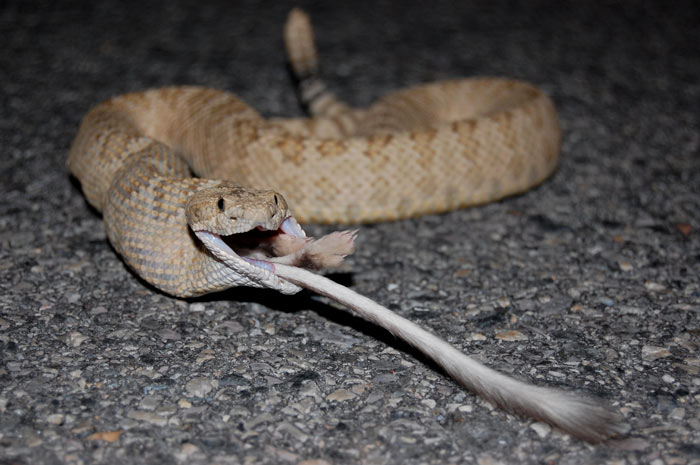

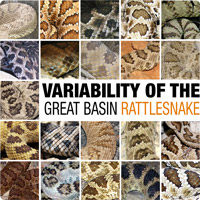
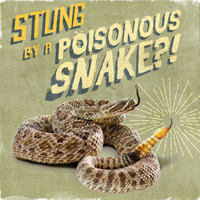



I enjoyed reading this Jamison. Great pics.
Thanks for the feedback, Greg! I know that not everyone enjoys snakes like I do, but hope that our posts will at least be informative and interesting. Feel free to leave any feedback or suggestions you think would be useful.
Thanks again!
Jamison
I love those pictures! I came across a mojave green once at my neighbors barn! That was kind of scary. And we see diamond backs sunning in the road all the time. I love hiking but we don’t have “trails” so I’m kind of afraid im going to run into a snake.
Thanks for the compliment, Jamie! Being aware of your surroundings, and wearing proper clothing is perhaps your best tool for preventing snake bites. It is always a welcome surprise when I get to encounter them in the wild, and despite seeing hundreds of them over the years, I have never been close to getting bitten. Thanks for the great comments Jamie! I hope to see you around here once in a while. 😉 Post a snake pic the next time you get a chance.
Cheers!
Jamison
I searched out your site to identify a snake My wife seen on my driveway down in Gold Canyon AZ last week. Turns out, it was a 3-4′ banded rock rattle snake. She is scared to death of snakes and just wanted to scare it off, where as I have a very strong curiousity for snakes that once got my hand bitten by a cotton mouth. Won’t ever be that stupid again my three inch scar left from the bites after math reminds me often.
Kenny,
I’m glad my humble blog was helpful to you. A 3 to 4 foot Rock Rattler is huge! They rarely exceed 2 1/2 feet. Did you happen to get any photos of it? I have loads more Arizona Rattlesnake pictures that I need to post, but simply haven’t had the time I’d like for blogging these days. These creatures are super fascinating and interesting to observe, but as you found out on your own, it’s best to avoid the pointy end. 🙂 I’m glad you were only left with a scar and not missing fingers!
I am amazed at the diversity of rattlers. And I agree, that C.molossus is stunning. Better start saving for a ticket to arizona
hemechatus,
Thanks for the comment. I love Rinkhals by the way! Arizona is amazing! I havea ton more photos from last year that I need to post. Including Kingpins like the Arizona Ridge-Nosed, and the Arizona Black. I’m hoping to get back down there again next year! Thanks for reading my post.
Jamison
Hi my family lives in az I’d love to do the hikes any recommendation on the Scottsdale area I love snakes and own a few thanks. Jim
Hey Jim,
Thanks for the comment, and question. I would rather have crappy luck, looking for snakes in the wild, than a guarantee to see a snake in a box in my basement. lol Seeing snakes in the wild, is as good as it gets for me. I absolutely LOVE it! That said, unfortunately I never offer any specific information regarding where to find snakes. This is a very public blog, that draws a crowd averaging over 300 visits per day from perfect strangers. Though most people have completely innocent intentions, there are far too many people out collecting (and sometimes illegally selling) the critters I care about. I’ve seen huge populations of “popular” serpents, all but disappear from over-collection, once those “hot spots” are made public. I HATE, that a few bad apples ruin it for everyone else, but it is a very unfortunate reality. This will make a superb Blog topic by-the-way, so thanks for asking the question.
That said, Jim, you live in “Herp Mecca”, and finding snakes there is not difficult. If you are primarily interested in hiking for them, I would probably avoid the hottest months, and stick to low-traffic trails that have water of some sort within half a mile or less. Do keep in mind, that most snakes are primarily nocturnal, which is why you may notice that many of my photos are taken at night. You may have better luck hiking during dawn and dusk hours. Please be very careful out there! There are 13 species of rattlesnakes in Arizona, and a bite from any one of them, will result in you having a very bad day – at best! Do not pick up any snake without knowing exactly what it is. It is no coincidence, that 90% of bites are on the person’s hands. I’m truly sorry to have to answer your question this way, but hope that you can understand why I have to be so careful. My last suggestion, is to get to your local Wal-Mart, and buy your annual small game permit. It is illegal to catch snakes in AZ without this license, and Fish & Game are very active in “enforcing” this rule. You don’t want to get caught hunting snakes without it!
Hope that helps!
Jamison
Pretty! This was an extremely wonderful article.
Thanks for providing these details.
I love rattle snakes – I live in New Mexico along the Continental Divide. I like to think the rattle snakes on my place have a safe place to live.
Can someone help me identify a snake. I saved 14 baby snakes. My friends tenant moved out and left them. Im trying to take care of them but dont know what they can.
Thomas, please post pictures if you can, or email one to me at , or text me a pic to 385-319-8007. Most snakes are going to eat small mice, but a pic will help determine if that is the right food, and what size of food they should be fed.
I emailed you a picture
when i lived in AZ i spent alot of time out in the desert exploring….and ran across several rattle snakes. once i saw an iridescent green one and assume it was a “green mojave”…but it was BRIGHT GREEN. i have looked online for a similar colored mojave and haven’t seen one nearly as colorful as that one. ???
Would love to observe a rattler in the wild (from a distance) but have not had any luck. I hike everyday, and typically chose a different time to hike. I spend of good amount of time in the rocks, and only see the rare tortoise. Anything I should be doing differently? I live near Walker Butte, and there is a wide range of Native reservation I travel in. The prey seem to be there, as I often see rabbits and round tails everywhere. Thanks.